BMX has seen its fair share of innovation and crazy ideas over the years. The BMX Fork has seen a lot of changes and interesting concepts. Here’s a look at a bunch of unique ones.
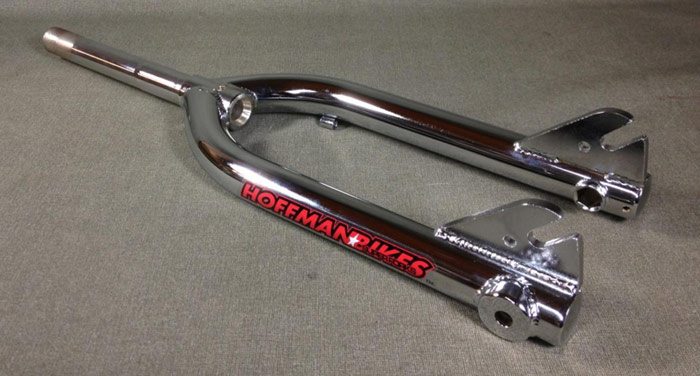
The other day we got thinking that it has been a while since we’ve done an Evolutions feature. We got thinking about some of the different BMX Forks that burned their design into our brain over the years, and then decided to reach out on Facebook, Twitter and Instagram to get a few good ideas of some of the classic BMX forks that have been available over the past 10-20 years. Originally it was going to be the past 10-15, but we got a few suggestions that we couldn’t pass up. Similar to the Evolutions of BMX frames post we did looking at how frames have changed, we’ve seen quite a few changes in almost every aspect of a BMX fork in that time period. So, if you want to take a walk down memory lane… Let’s do this! If we missed something good (which we know there always will be) let us know in the comments at the bottom!
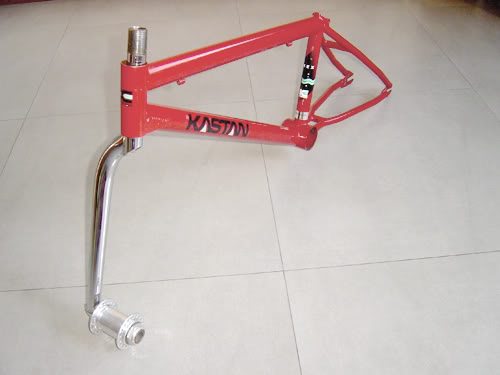
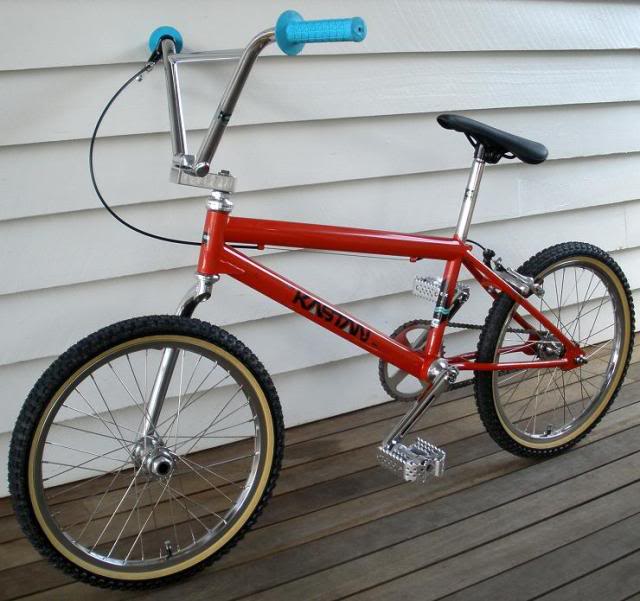
Kastan Uniblade Fork
We didn’t really have a good “starting point” for this one since it seemed like even if we tried to set a point, there would be another suggestion to pop up that would push it back. However, one of the suggestions was the Kastan Uniblade fork which is a good spot in the 90’s. As you can imagine by the name, this one legged BMX fork with a built in front axle / hub, was one of those things that hit and it could have gone either way. Obviously, having one leg seems like a pretty sketchy idea, but the unique concept was enough to get peoples attention. We would love to see how those would hold up to riding these days, haha.
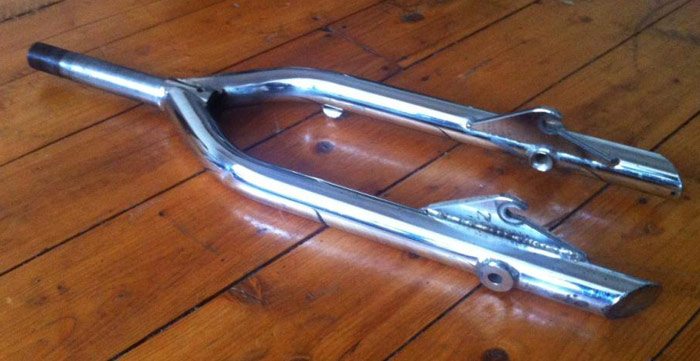
Here’s one Jon over at Can You Dig It suggested that we honestly had never heard of… Zima (which we only recall a shitty malt beverage company named that) produced this fork which had some wild drop outs and long legs that were bound to catch your eye… or on something as you rolled by. We’re glad long legs are only look good on girls these days, haha.
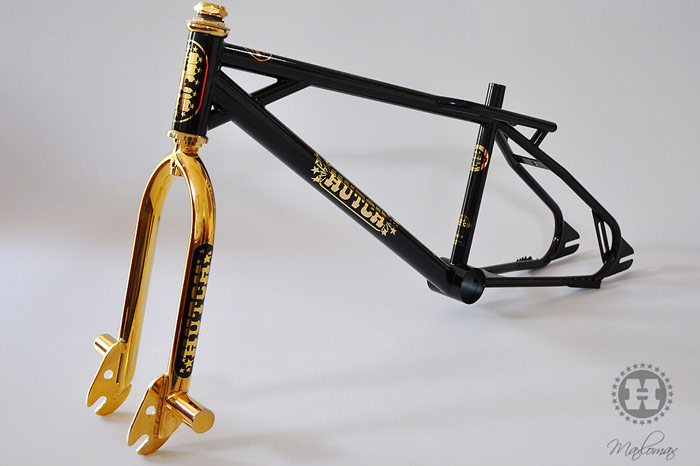
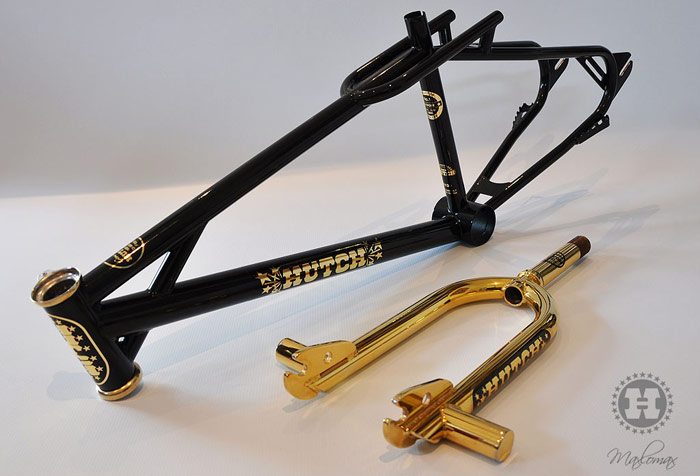
Google is a funny thing. You can search for something and then end up coming across something completely different. While we were looking for photos of S&M Ditch forks (which is below, don’t worry), these crispy photos of this custom painted Hutch Trick Star fork. Although those pegs weren’t made for grinding, they were made for standing and doing all those crazy flatland tricks before ramps and everything really took over. This fork is real pretty, but it definitely wouldn’t last long in the current state of BMX.

Now, this compilation of forks will bounce around a bit from the earlier points just because we honestly can’t remember when these came out other than rough estimates in years. So, we’ll just highlight the earlier forks and get a little more specific the newer we get. Above is the Hoffman Bikes Super fork, which was one we saw a lot of suggestions for when we reached out to everyone. As everyone knows, after destroying parts like it wasn’t even a challenge (which it really didn’t appear to be), Mat Hoffman fired up Hoffman Bikes to produce higher quality products that weren’t going to break from the crazy levels of progression. Oversized and strong as hell was the goal to avoid waking up from being knocked out when something catastrophically failed. The Super Fork was one of those creations. Thick tubing, big drop outs and peg bosses. Axles couldn’t take the abuse that they can take these days, so moving pegs to have their own axle was a route that a few different BMX forks offered for a period of time. You could bolt a front 990 brake plate on these and get that front brake magic going, which is why there’s a cable guide welded on as well.
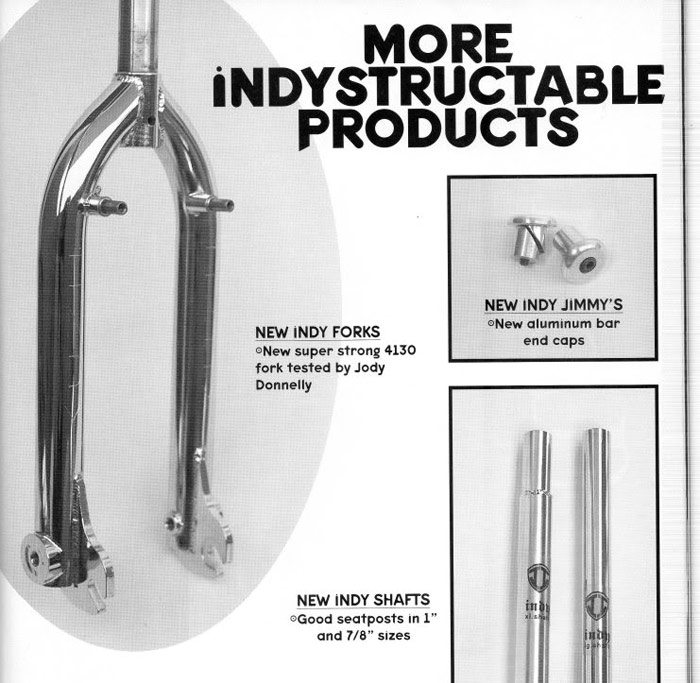
Indy Industries Fork
Although we had never heard of these, Tom from Empire BMX suggest these bad boys for the list. Peg bosses, front brake mounts and some beefy drop outs lead us to believe this fork could take some serious abuse.
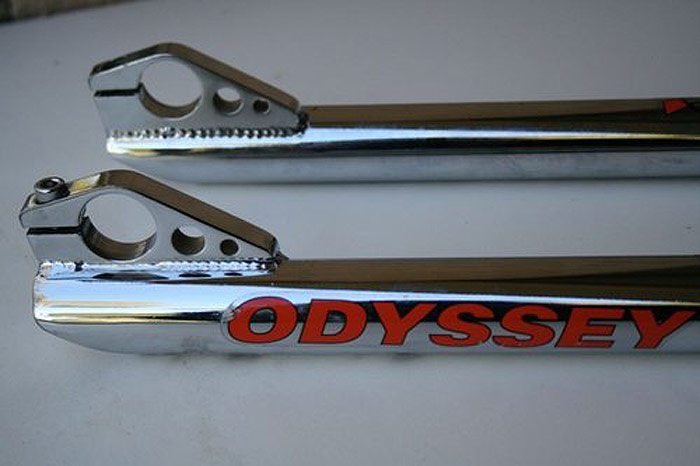
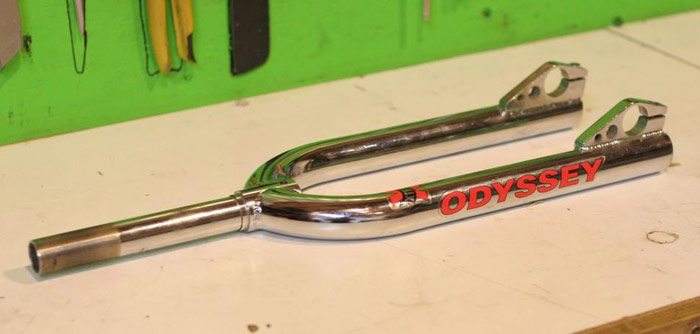
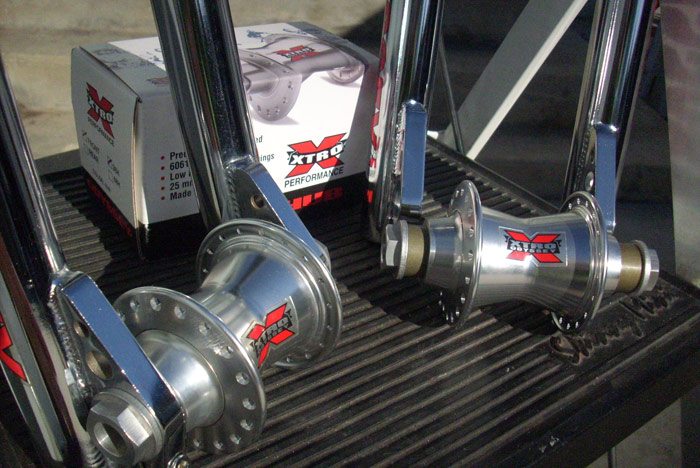
Odyssey XTRO Fork
Here’s one we meant to get in first go, but slipped through the cracks. The Odyssey XTRO fork. The first thing that will catch your eye are those crazy full drop outs with a bolt to clamp them down. Notice the drop out size? That’s because they were specifically designed for the XTRO female hub which featured an oversized axle to ensure the combination was bomb proof. drop the hub in, thread the female bolts, clamp down the fork bolts and then tighten the hub down… Can’t imagine how much this combo weighed, but it was a unique concept.
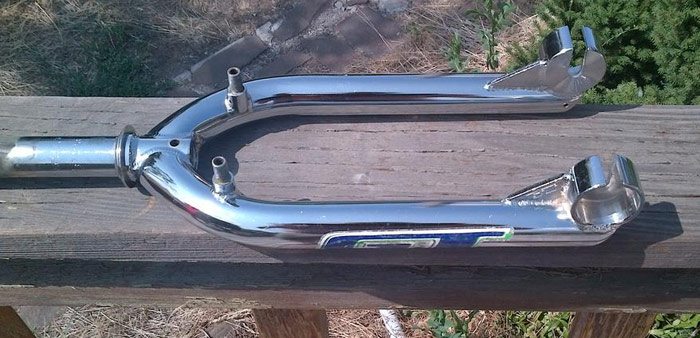
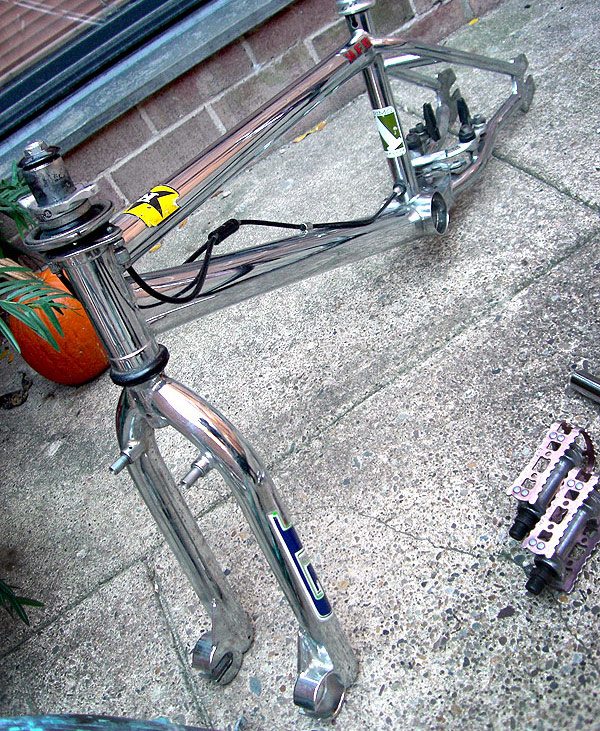
GT Pacman Fork
Another classic that we were reminded of was the old GT Pacman fork. Front brake mounts and big drop outs that were designed to wrap around your pegs. This would help keep the pegs from having room to bend and it would also help protect your hub a bit as well.. That is if you didn’t land on the drop outs.
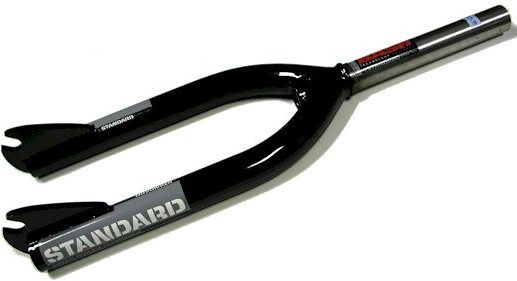
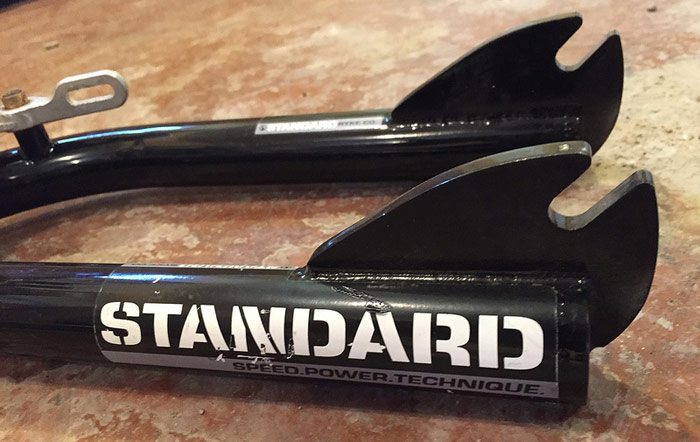
Standard Bash Fork
If there’s one thing Standard Bykes are known for, it’s not producing weak products. The Bash fork was designed to take some heavy abuse and was a choice fork for a lot of pros back in the day because they didn’t have to worry about them breaking. Big thick drop outs and front brake mounts… Pure beef. Made in America!
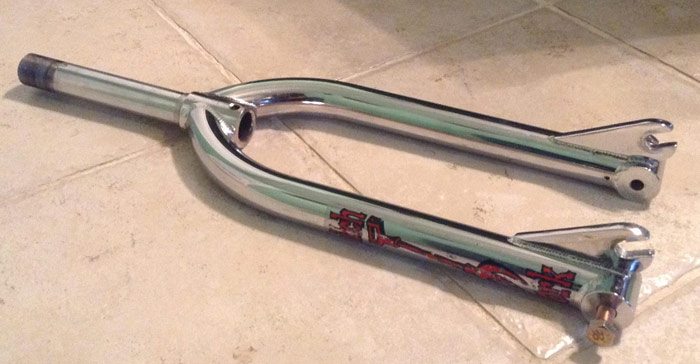
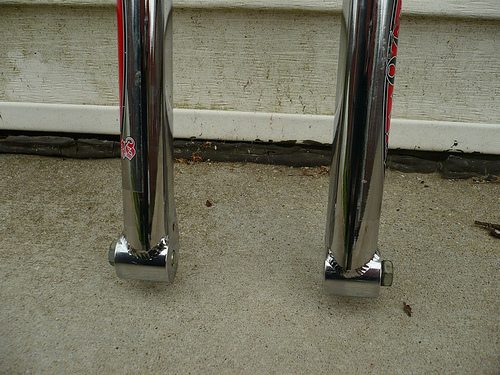
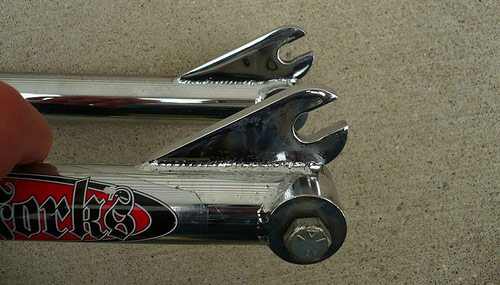
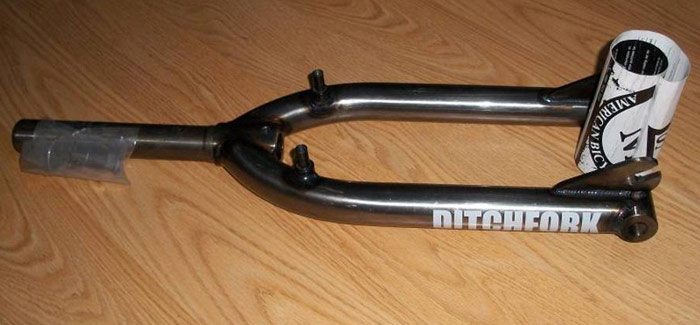
S&M Ditch Fork
There was no way we could compile this group of classic BMX forks without including the S&M Bikes Ditch fork. These were (and still are for a few riders) the choice of most BMX riders when they came out and it’s because they were built to be indestructible. Beefy tubing, thick drop outs, fat welds, peg bosses with big 14mm bolts to keep those pegs from breaking off and a front brake mount option. Another classic made in America fork. This fork has lead to a number of revised versions like the Pitch, Pitch XLT, Fast Pitch, Widemouth and more… All carrying on the tradition of the originals.
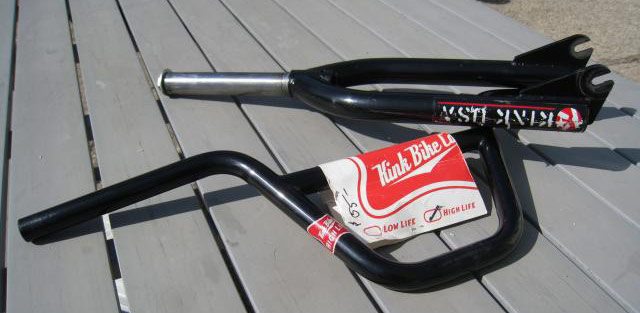
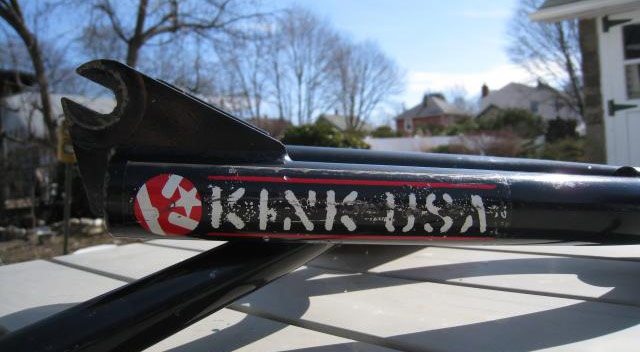
Kink Empire Fork
Kink is one of those BMX brands we love looking back on, because Zack Phillips and the rest of the crew have always been producing some dialed products since their first Empire frame and fork was released. Although they’ve had some pretty beefy products that have lead to their refined line these days, Kink have always had a good reputation from producing a product that could take some abuse since their first whack at it way back in 1998.
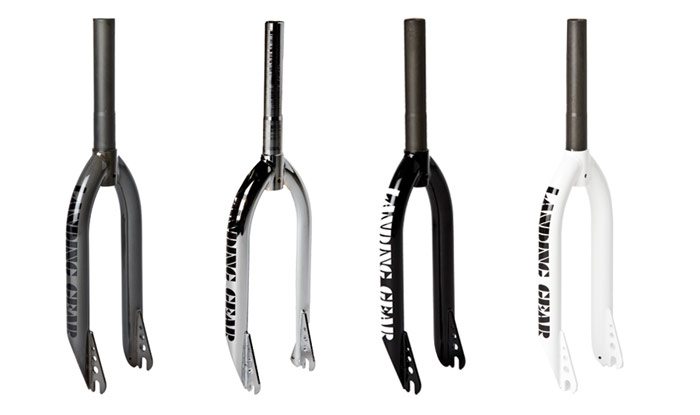
SE Bikes Landing Gear Fork
Here’s one we’re sure is out of order and not a photo of the originals, but that’s okay since the design has stayed pretty much the same. The SE Bikes Landing Gear fork was one of those eye catchers that featured legs with a big diameter and some crazy drop outs that were long and drilled out. These have evolved a little over the years, but SE still offer a version of them today.
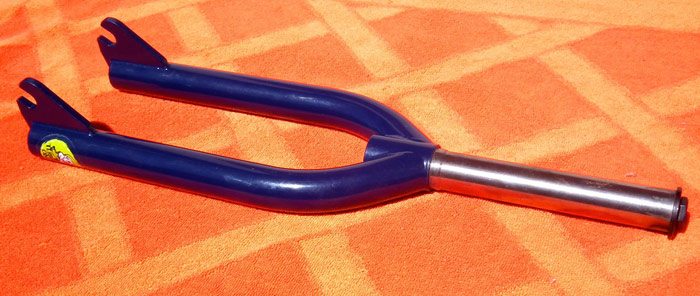
Terrible One Fork
When you ride like Joe Rich and you’re always doing some really gnarly shit whether it’s huge fufanus or blasting big airs, you want to be able to trust what you’re landing on. So, Joe designed some beefy forks for Terrible One that were able to withstand the wild riding that riders were putting their bikes through at the time. There were a lot of riders that swore by these guys.
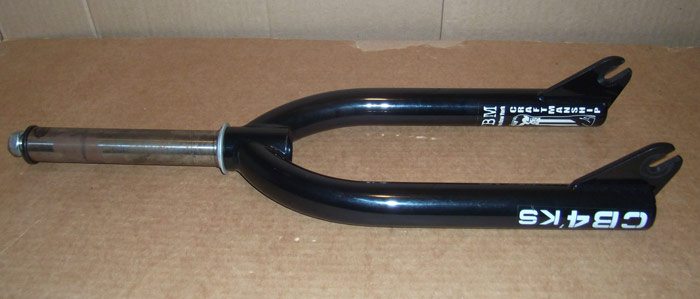
FBM CB4K Fork
Another American made classic. The FBM CB4K is one of those forks that quickly made the list when we were asking for suggestions for this list. Between the beefy tubing and thick drop outs, these things were built to take a pounding. FBM recently re-released these with some slight modifications to make them lighter and more current with todays trends, but still built to take a beating and made in America.
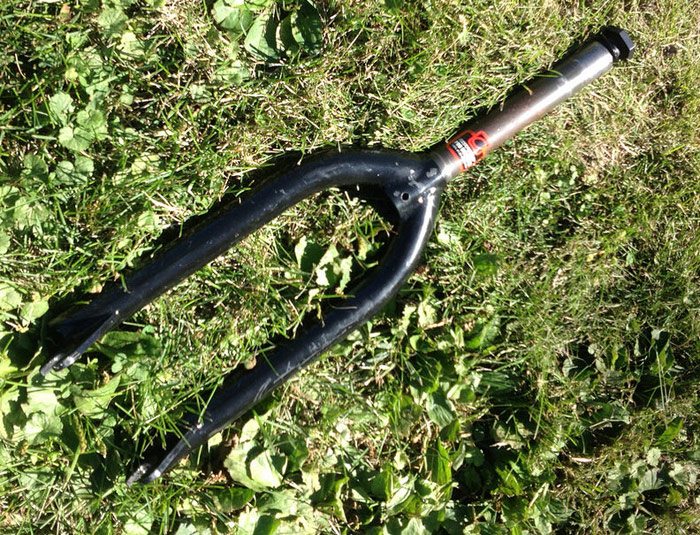
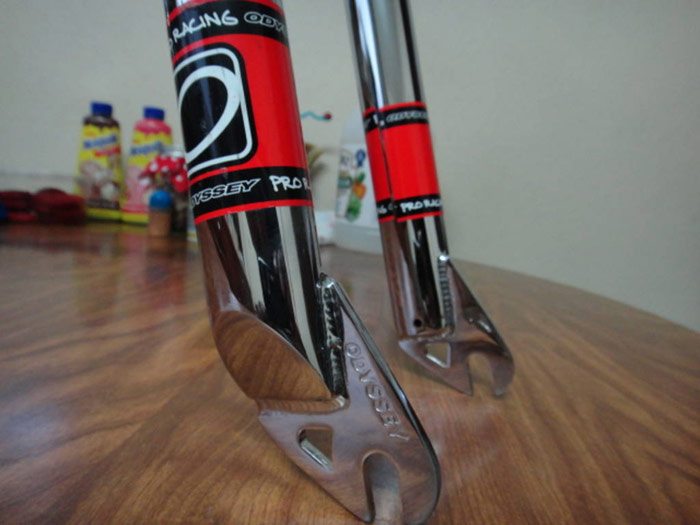
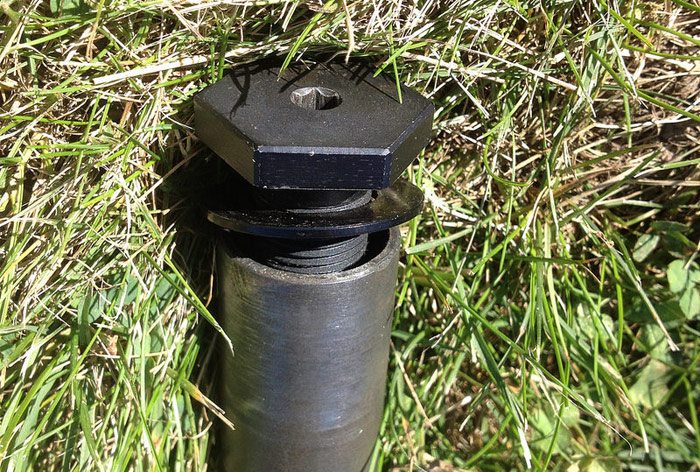
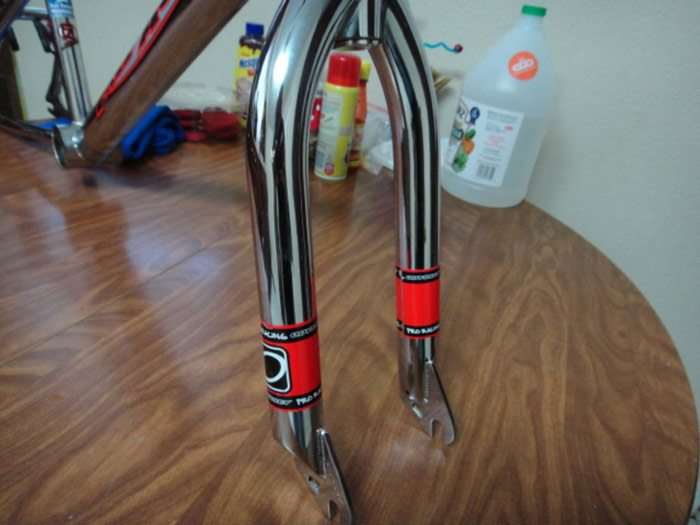
Odyssey Pro Dirt / Race / Vert Forks
Over the years, Odyssey have been known for producing some high quality, well designed products that are built to take a beating. They offer their 41-Thermal heat-treating on their forks and a lifetime warranty that backs their work. Their original Pro fork that was available in Dirt, Race and Vert versions were deemed classics that have evolved into what their current line offers today, with different offsets for each style of riding and features like front brake mounts for the vert fork and oversized tubing for the dirt fork to take that heavy abuse. I personally ran a pair of dirt forks that I bought off another rider… The only reason I switched out were for a lighter fork probably two or three years later.
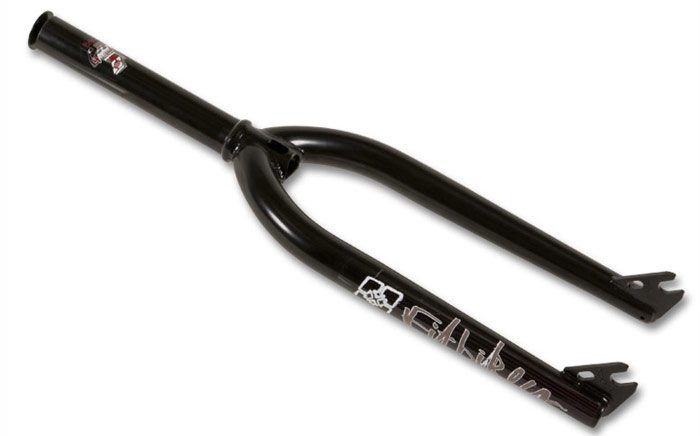
Getting even more into “current” BMX forks, we have the Fit Bike Co. Shiv fork, which was one of the earlier forks to go for a lighter design. These guys offered tapered legs, and a slimmer design that other forks at the time, which were popular among the riders trying to push the limits of lightweight on their bikes around 2008 or so.
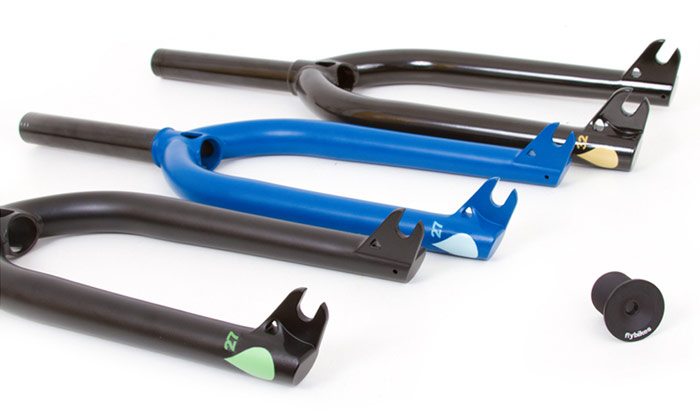
Fly Bikes Agua Fork
The Fly Bikes Agua fork is another one of those that offered a few options that really caught on as time went on. The Agua fork was the first to offer Investment Cast drop outs in 2008. They also brought in the integrated cone race in 2005. Two things that we find on most BMX forks these days and they still offer on their latest version of the Agua fork that is currently available.
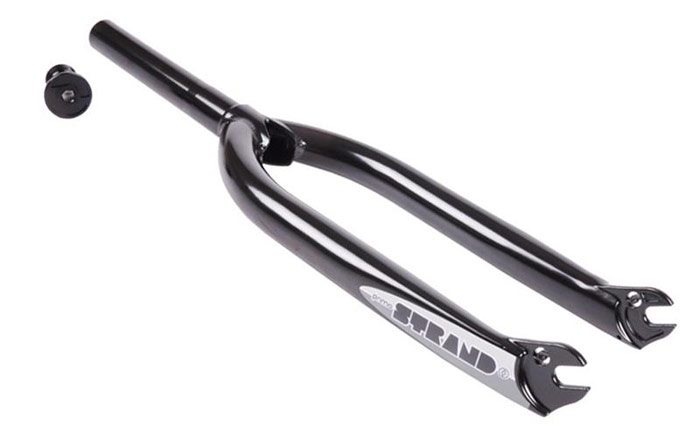
Primo Strand Fork
With street riding becoming increasingly popular and nose manuals and tricks on the front end being part of that. Primo were one of the early ones to offer minimal offset forks to help with that.
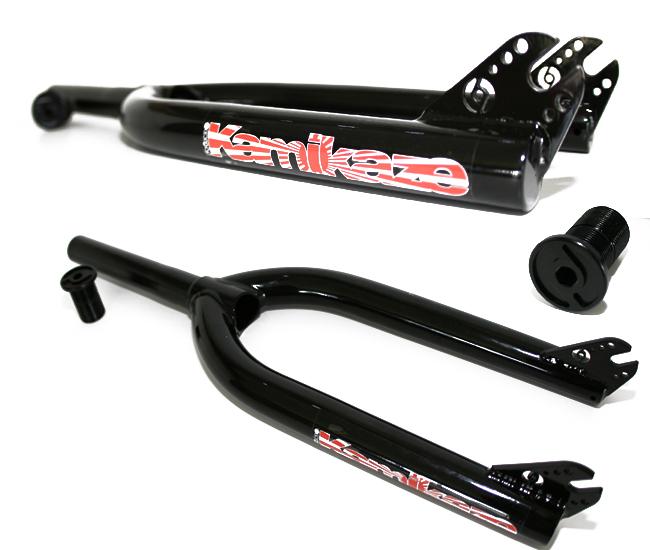
Primo Kamikaze Fork
Couldn’t resist mentioning the Primo Kamikaze fork. We’re not sure where the name came from, but based off all the holes in those drop outs that we’re sure was to help reduce added weight… We’re going to assume it was a suicide mission to dive bomb on these, haha.
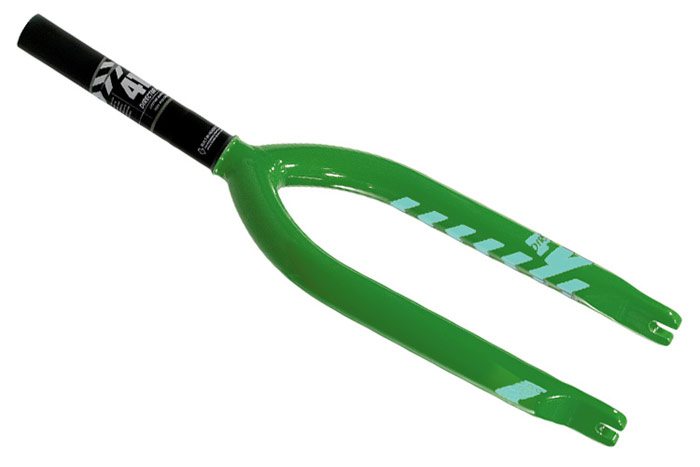
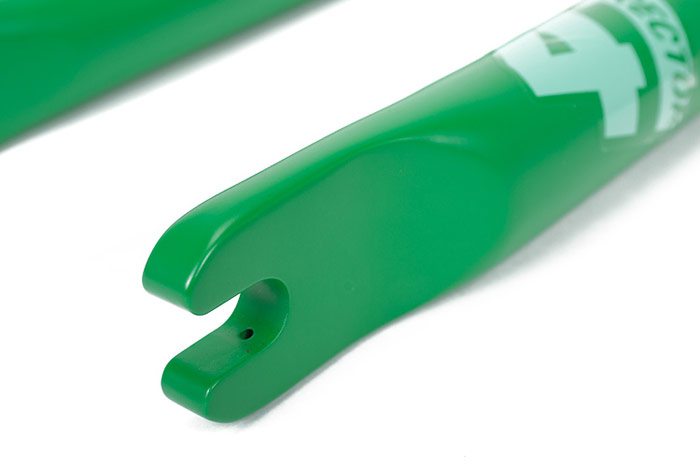
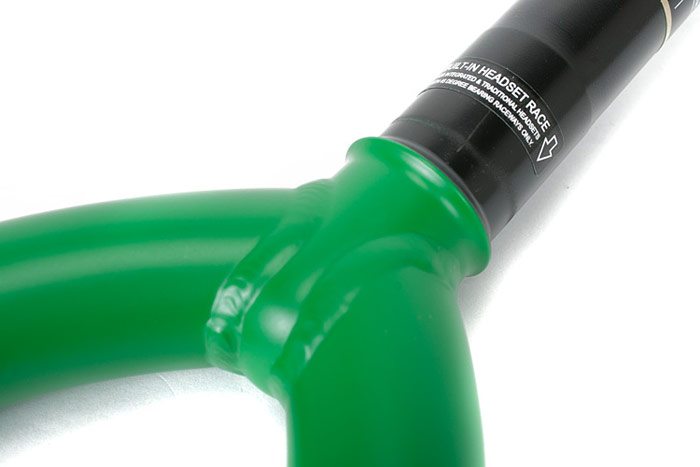
Odyssey Director Fork
The Odyssey Director fork is one of those designs that really confused people when it first came out. The design that incorporates the dropouts into the legs, versus having them welded on as an extension, look funny, but were designed to eliminate the ability to crack or break the drop outs since impacts would be absorbed into the legs versus the drop out. The legs were bent to account for the offset, which always triggered people to say “Your fork is bent!”. It was an innovative idea, but we didn’t see any other brands take a whack at this one.
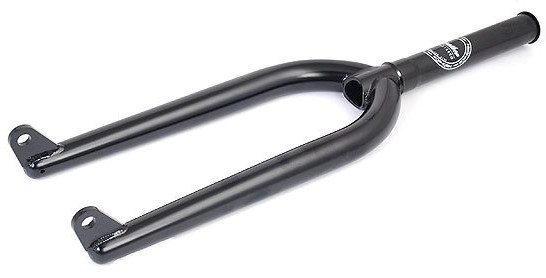
Kis Bike Co. SL Feather Fork
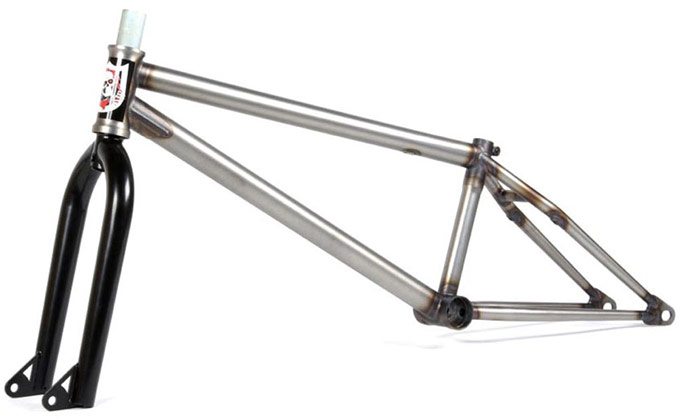
S&M Bikes – WTF Fork
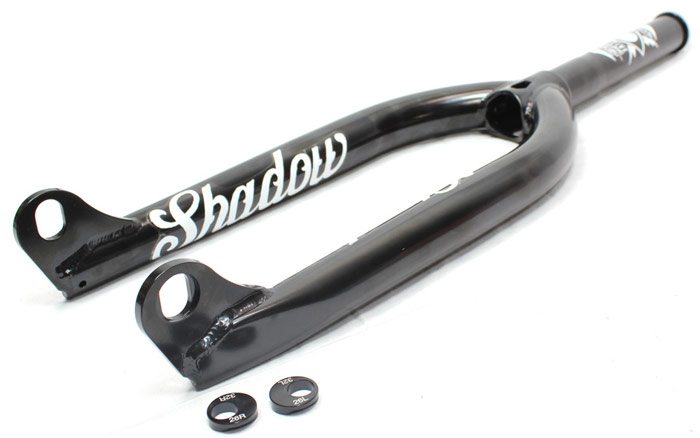
Shadow Conspiracy – Captive Fork
Over the years, we’ve seen a couple forks that were designed exclusively for female axles. The Kis SL Feather fork was the first to offer this unique design. S&M Bikes offered the WTF fork which was designed to match the female dropouts on their WTF frame that was sold as a kit, and then The Shadow Conspiracy’s Captive fork which featured a unique insert that allowed you to switch between two different offsets. I believe it was 26mm and 32mm. Shadow still offer their Captive fork today.
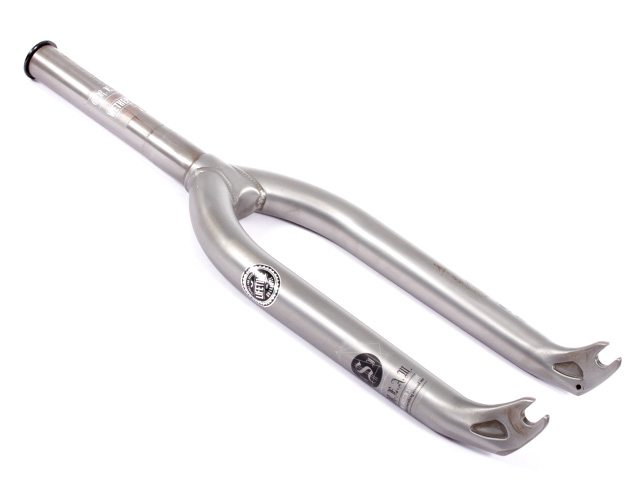
Wethepeople C.R.E.A.M Fork
When we look back on the forks we have brought up, it’s safe to say, other than the Odyssey Race fork, that most were designed with the goal of being able to handle grinding. The Andrew Jackson signature C.R.E.A.M fork from Wethepeople was designed to do the opposite. It was designed to be a pegless fork with clean investment cast drop outs that look really good.

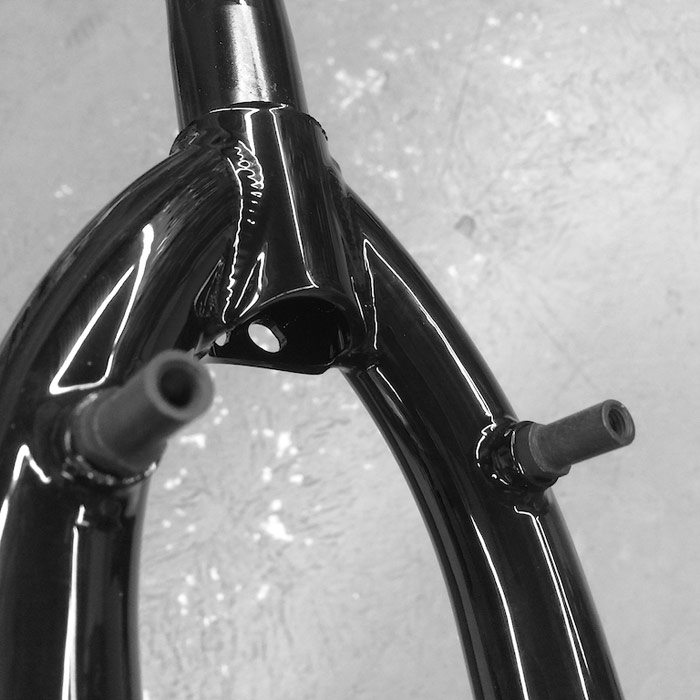
Deco Fu Fork
We’re not 100% sure, but we’re fairly certain that Chad DeGroot was the first one to offer a BMX fork with removable integrated brake mounts. Over the years we have seen a number of BMX forks with brake mounts, and even 990 plates that could be bolted on to forks, but these allowed you the option of running front brakes or not depending on how you were feeling. There was even a special hole in the back that was designed for the cable to run through it. Rad design none the less.
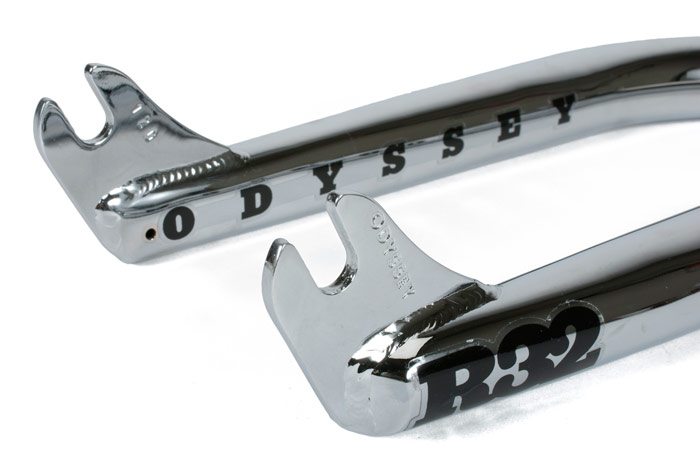
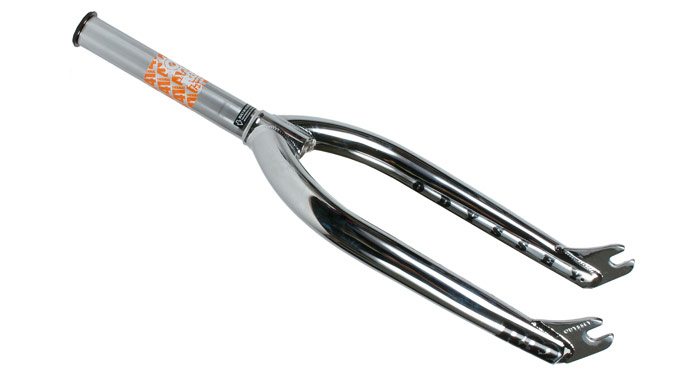
Odyssey R32 Fork
Let’s wrap things up here with a solid option that’s currently available. The Odyssey R32 (Also available in an R25 version with a 25mm offset) which features the 41-Thermal heat-treated, tapered, butted and specially formed legs, 4mm thick laser cut drop outs and a steerer tube that’s designed to take some abuse with an integrated headset race. Weight? 1 lb. 15 oz. Quite a bit lighter than some of the other options we saw above. It’s been fun watching BMX develop and get more and more dialed as time goes on with product design. There’s no denying that BMX forks have come A LONG way with design and they keep getting better.
So, we’ve seen forks come from oversized monsters with a lot of add ons that have been refined over and over again up until today. Peg bosses are no more, headset races are integrated, dropouts are much smaller, tubing is smaller, tapered, butted, and fork compression caps are threaded in versus trusting a star nut to hold it all in place. It’s pretty amazing to see all the differences lined up, isn’t it?
We know we missed a few, so let us know in the comments a few that you think should have made the list! Also, what fork do you run? How do you like it? Feel free to chime in too!

